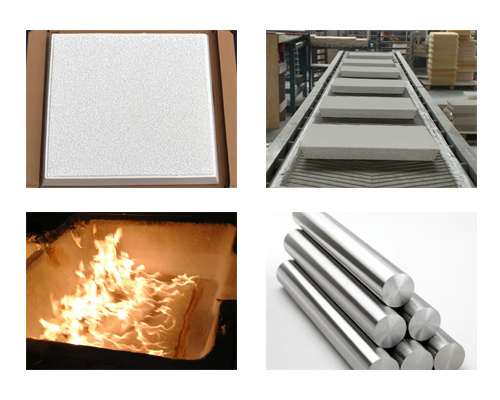In order to obtain the required metal purity, it is usually achieved by refining and foam ceramic filtering. Melt filtration is another important process of melt processing. Filtration methods include deep bed filtration, glass mesh filtration, corundum tube filtration, foam ceramic filtration, and many other methods.
Foam ceramic filter has many advantages such as good chemical stability, large specific surface area, and convenient use. The ceramic foam filter plate is a deep-bed filter medium. The inclusions it captures are much smaller than the pore size of the filter plate, making these inclusions stay inside the filter plate. CFF Foam Ceramic Filtering has been widely used in actual production. Ceramic foam filters are very common online filtration systems for the production of standard products (rolled slab or squeeze billet casting).
With the continuous improvement of the market’s requirements for the quality of aluminum materials, the precision requirements for melt filtration are also getting higher and higher. In addition to the application of filter plates with smaller pores, a two-stage filtration technology has also been developed. Theoretically, improving the filtration accuracy can be achieved by increasing the thickness of the filter plate. According to analysis. For the 30ppi CFF filter, the filtering effect is the same as the two-stage filter composed of 50mm 30ppi and 50mm 60ppi. Obviously, the latter is more economical. Two-stage filtration requires the use of coarse filter plates first, followed by fine filter plates.
In semi-continuous casting, the original casting process stipulates that the filter plate must be replaced every time the casting, that is, the filter plate is only used once. In other words, it can be thrown away without seriously affecting the filtration efficiency. Therefore, the metal flow rate of the ceramic foam filter has an impact on the filtering efficiency: the flow rate is set correctly, and the filter after continuous use is very efficient. When the speed is too fast, the efficiency continues to decline over time.

